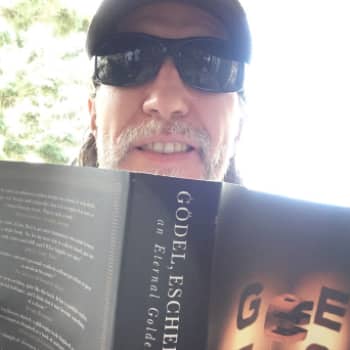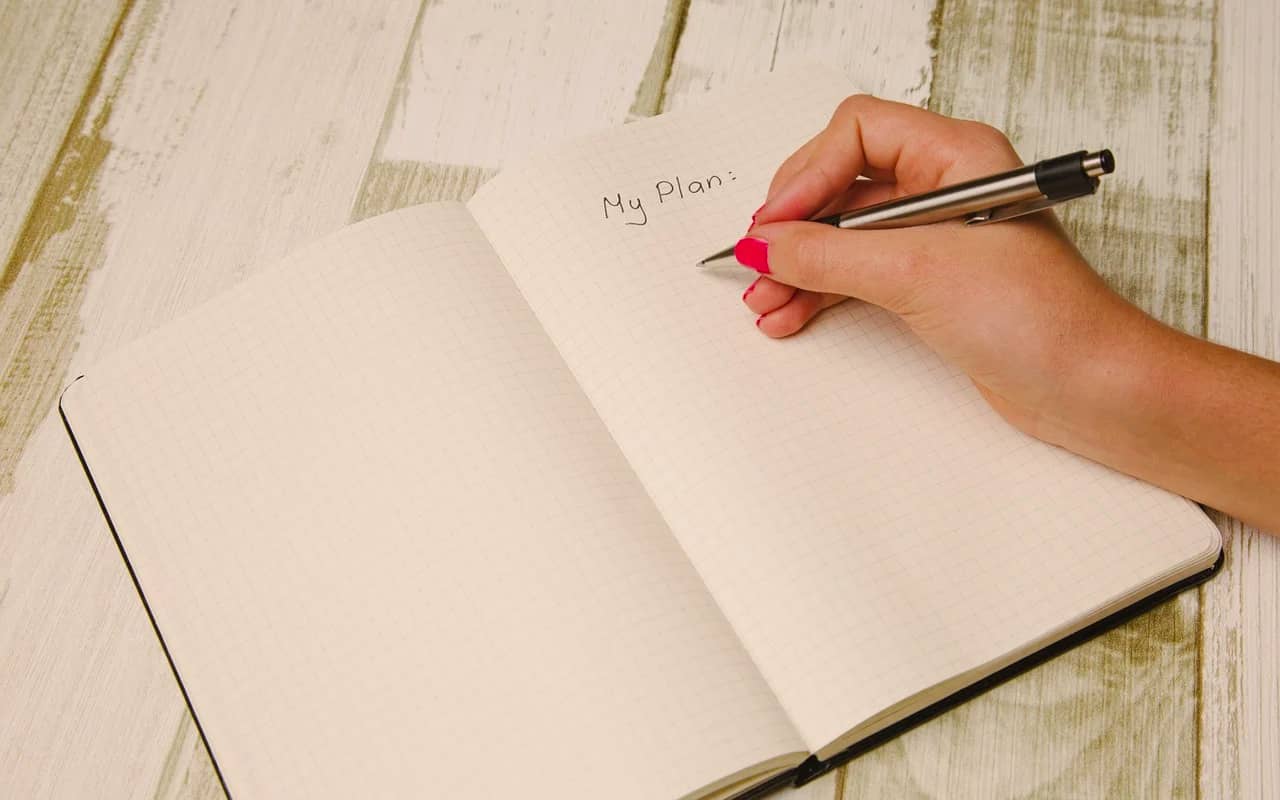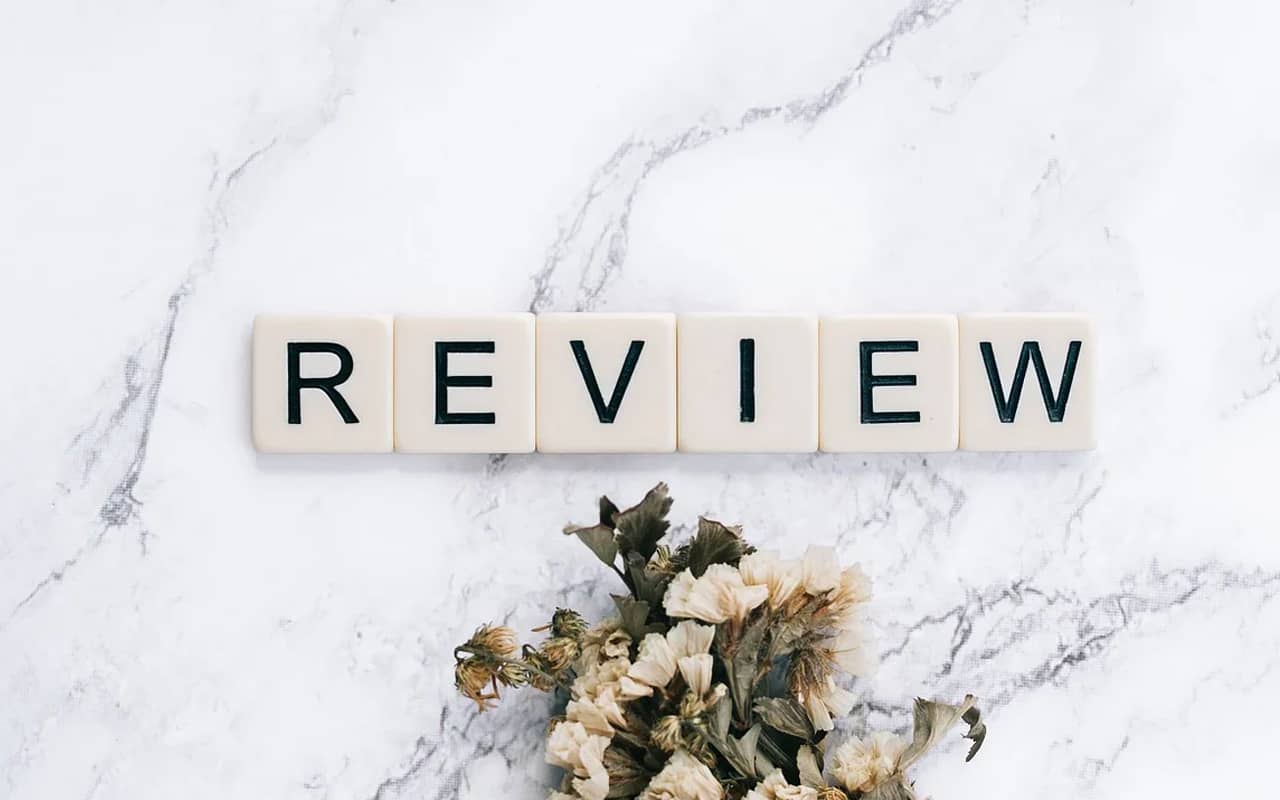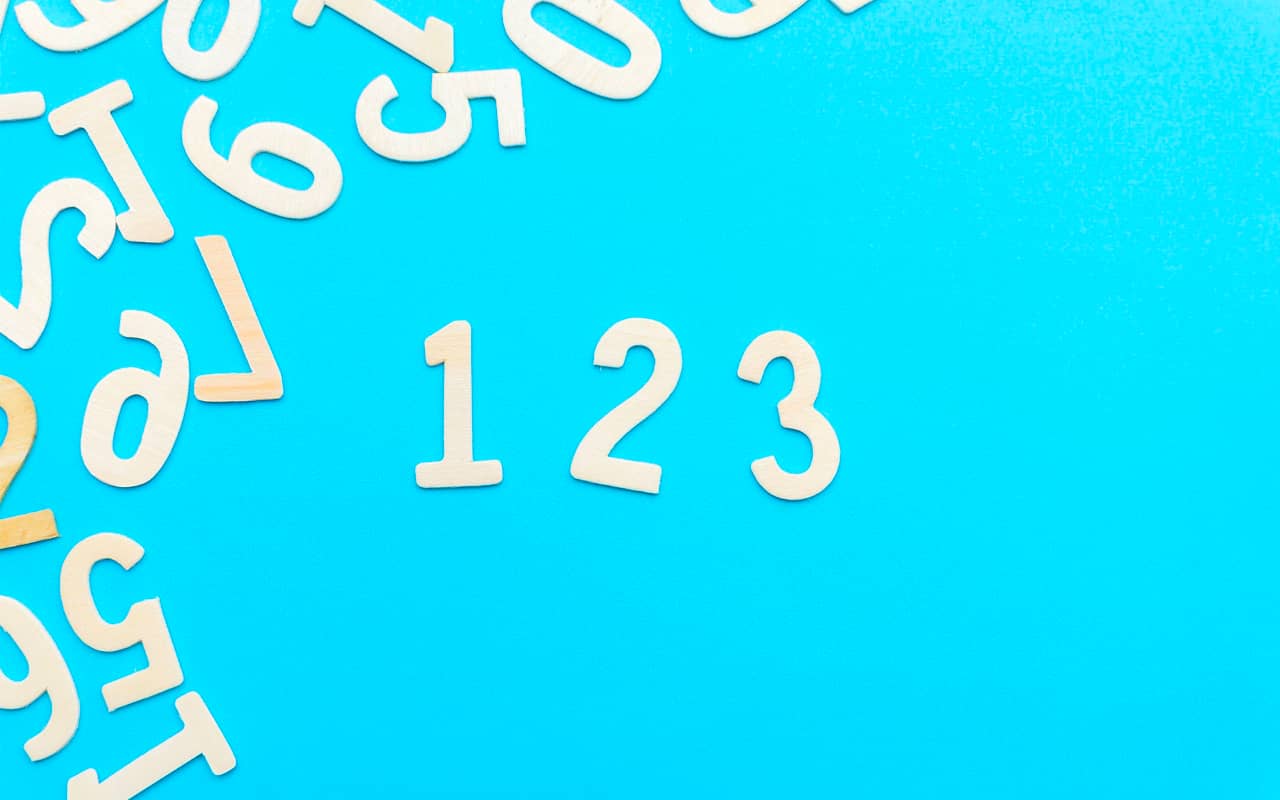Podcast: Download
Subscribe: Apple Podcasts | RSS

What if I told you such “speed reading” techniques are probably a waste of time?
Especially if you’re a serious learner who wants to retain what you read. And comprehend it so you can achieve the big goals you have for your life?
If you’re the kind of learner who wants to read, remember and understand, you’ll love the tutorial on this page, because…
There are at least three reasons why speed reading won’t help a lot of people.
These reasons that they have:
- A limited vocabulary
- A limited understanding of the field
- A lack of multiple reading strategies
How do I know?
I’ve taught reading and writing at three universities. And I’ve taken multiple speed reading courses.
Frankly, even if the classic speed reading techniques like controlling your eyes better and silencing your inner voice really did help you read faster… so what?
If you can’t recognize what even a small percentage of words mean and lack familiarity with the topic area, you’re not going to understand any faster. This is the vocabulary part of the issue. People who know more words read faster.
If you’re in that situation, you’d actually do better reading slowly, looking up words and terms, and interrupting your flow to aid understanding by reading outside of the main text.
So with all of these points in mind, let’s reframe the question:
If you’re learning to read faster, what are the fundamental speed reading techniques that will help you zip through multiple books in a single day? All while maximizing retention and comprehension.? These are the exact techniques we’re going to cover on this page.
Who am I to address these topics? I’m a PhD, Mercator Scholar, member of the Australian Psychological Society and someone who blazes through multiple books week in and week out. I practice a set of the active reading strategies I’ve learned over the years, and continue to read the most up to date research on retention and comprehension.
And here’s the best part:
By weeding out the reading tactics that don’t make sense, I can help you read quickly without giving yourself the headaches most speed reading courses induce. So if that sounds good to you, let’s get started.
How to Read Faster (While Retaining Vast Amounts)
People email me all the time saying that they want to remember “everything they read.”
That’s fantastic, but please define “everything.” Overall, you can retain a lot of information, but as a goal, “everything” doesn’t quite make sense. Especially when you consider that most of what we read consists of operational words like “the,” “and,” “if,” “but,” and so forth.
In reality, unless you’re memorizing an entire book, almost no one actually needs or wants to remember everything. As the case of Jill Price’s so-called photographic memory demonstrates, trying to do so can in fact make you ill.
So, rather than be vague and mysterious about what “everything” means, you will do much better by developing a number of “decision metrics” to guide you as you read. You can do this in the form of setting proper learning goals and using a well-formed learning cycle. In other words, set specific goals about how much you want to read and be clear about exactly what you want to retain from the reading. This can take some practice, and I have a full tutorial on how to find the main points in any book you can learn from.
With these holistic learning structures in place, frustrations around your reading speed will soon disappear. You will safely leave behind all the instructions about recording your baseline reading speed and suppressing your inner voice, only to be told by speed reading experts that you’re supposed to make mental images and ask questions as you read.
(Seriously? How are you supposed to reduce your inner voice and increase it at the same time? Speed reading courses that teach this idea should offend anyone with a modicum of common sense in their system.)
So we start by thinking about goals for reading faster and remembering more. And to do that, let’s just expose the white elephant in the room:
There is no perfect way to get started.
But if there is something like perfection, just getting started is the key. That’s why I’m sharing the tips you’ll find below, all geared not only to reading faster, but retaining and understanding the material.
Keep in mind however that the tips below are not necessarily “steps” to follow in order. Adding all of them to your reading practice will be useful and my hope is that you’ll rethink what reading is, and what reading can be.
How to Read Faster While Retaining & Comprehending More
Tip #1: Set goals with deadlines within a reading plan
If you want to read faster, you have to practice reading more often.
Why would reading more often help? When it comes to remembering more, you’ll get natural spaced repetition.
Literally, the more you read, the more you’ll come across the big ideas and the granular details. Even without mnemonics, you’ll find yourself remembering more.
And the best way to get yourself reading more frequently can be stimulated by creating a reading plan for yourself. That way you can develop topic mastery based on a combination of vocabulary, specific terminology, history and the perspectives of the main players in the field.
For example, when I was researching my book, The Victorious Mind, I created a 90-day reading plan. That way, when using all the techniques you’ll discover on this page, I was consistently reading in two ways:
- According to a specific research schedule that gave me natural spaced repetition
- Reading in a “direction” that was leading me to completing a specific research goal

Creating your own reading plan takes some practice, but here are some suggestions. These considerations are important because if you want to read faster in ways that stimulate retention, you need to develop familiarity with the topic. This is important because understanding comes from familiarity.
The follow steps are based on a reading course I used to teach at Rutgers to help students develop topic mastery faster:
- Find the definitive textbook or most famous book on the topic. For example, when I started a reading project on consciousness, I quickly found out that Gödel, Escher, Bach is a key text in the field.
- Find 2-3 articles about the book and read these. Go beyond the Wikipedia page.
- Find 2-3 videos.
- Find 2-3 podcasts.
- Use my how to memorize a textbook strategy as you read to cull out the information you want to remember
- Follow-up with 2-3 of the books mentioned in the definitive textbook
- (In massive tomes like Gödel, Escher, Bach you’ll discover endless reading suggestions, so setting a limit is really important!)
How will adding more material to your main book help you read faster?
My friend and fellow memory expert Jonathan Levi calls this tactic, “brute force learning.” You’re literally taking on a bit more than you can handle using this approach.
The answer behind why getting outside of one’s comfort zone helps you read and retain more is simple:
When you start with the fundamentals and develop knowledge of the field, you’ll give yourself the most important reading skill in the world: pattern recognition.

In setting proper reading goals, you’re learning what it means to know your field. The more you know, the more you can know, and that will naturally help your brain:
- Recognize big and important ideas faster
- Connect them to fundamental concepts in instantly memorable ways
- Using multiple mediums like video and audio tap into more representations of your brain and add more perspectives from others who have read the book
Note: I personally expect every beginning to be “front loaded” with more effort and embrace Jonathan’s brute force learning concept. Only after some “pattern recognition” has been developed do I expect to read and understand faster. However, we want to make sure we don’t fall into collector’s fallacy, which is why when I suggest 2-3 other resources, I really mean 2-3. Avoid spending all your time collecting things to read and make sure to be thorough about completing small sets or clusters of material before moving on.
To develop your pattern recognition as quickly as possible as you read for retention, let’s look at the next powerful strategy.
Tip #2: The U.S.S.R. Technique
It would be nice if life were simple enough that we can always read at the same time and the same place – just like we did during our school years.
In fact, with a bit of planning, we still can. And scheduling the time and place for reading is one of the most important strategies for reading faster that I know. This is thanks to the power of rhythm and flow.

U.S.S.R. stands for Uninterrupted, Sustained, Silent Reading.
Instead of doing eye training exercises to expand your peripheral vision, protect your environment from visual interruptions. Read in a quiet place with little or no foot traffic. Put borders around your time.
And if you have family or roommates with schedules that interfere with your own, take responsibility and communicate with them about your needs. It would be nice if other people would remember and respect your schedule and goals, but it’s unrealistic to hold them to that standard. Be firm and protect both your time and space.
That said, I wasn’t always able to read in the same place and at the same times everyday when I was in university. That’s why I’ve shared everything I did to get multiple A+ grades in grad school:
These study habits are powerful and that’s because they maximize your personal flexibility.
But note how in the video tutorial I share with you my custom earplugs strategy. It takes a bit of discipline to carry them everywhere, but they really do help put the “silent” in the silent reading formula you’ve just learned.
If you think that noise doesn’t affect how fast you read and retain information, I suggest looking at this study. Basically, it found that noise contributes to low performance outcomes on just about any cognitive task you engage in.
Tip #3: Learn to relax
A lot of people are so stressed out about not reading quickly enough that they tense their bodies. This lack of physical ease puts their posture out of whack, impedes breathing and makes being alive generally uncomfortable. When learning how to read a book fast, you need to be in an optimal physical position.
Rather than give a cookie-cutter, one-size-fits-all approach (that doesn’t exist), I suggest you experiment. You may need to sit in different ways depending on the topic matter, so explore as many positions and places as you can. Either way, please rest assured that good research demonstrates meditation helps with comprehension. This systematic study also shows the positive impact meditation can have on both comprehension and long-term retention.

Meditation is also a key strategy for developing concentration on demand. These 12 concentration meditations should help you out if you want a number of routines to follow. Concentration is another key to being able to read quickly and not get frustrated when you come across confusing or unfamiliar terms.
And here’s another point to keep in mind, related to my strong suggestion that you just start reading more often:
Reading itself has been scientifically shown to increase relaxation. It’s a win-win when it comes to living a much more relaxed life.
Tip #4: Do Not Avoid Reviewing
I’ve never understood the emphasis on eliminating “back skipping” or “regression” you see in the speed reading community. Avoiding re-reading strikes me as precisely the way to make sure you forget information, not to mention failing to understand it.
Rather than avoid back skipping, I suggest reviewing frequently and strategically.
For example, I like to hold my finger in the page where the chapter started and go back to it several times. This technique is kind of like inner-book interleaving, which we’ll talk about more later.
(It is not really possible to reproduce this technique when reading digitally, though some software programs allow for multiple bookmarks that make this easier. If the document is numbered and you have a Major System, memorizing page numbers can help with this as well.)
But the main point is that I don’t stress if my mind wanders or I need to go back. Reviewing is a way to keep focus, maintain connection with the book and actively connect the dots for both comprehension and retention while reading.
I’m biased, but I also find that physical books are better for avoiding mind wandering and you get other benefits, as I’ve described in detail here:
Here’s a sub-point about re-reading that is worth exploring:
Scientists have shown why reading aloud to children is helpful.
But I’ve also found it helpful to get at understanding faster. For example, when reading difficult science articles or philosophy, I sometimes come across dense sentences. Rather than repeating them silently in my mind, I get my mouth involved and sound them out.
Even better than understanding faster, Colin Macleod and his fellow researchers have found that sounding out words improves retention in memory. They call it the Production Effect.
So even if reading out loud might technically feel slower, it’s actually leading you to better understanding and memory faster in many cases.
Tip #5: Do Not Wreck Your Eyes Based On Bad Science
A lot of speed reading books ask you to follow a pen in an infinity symbol. Or they might ask you to draw dots on your pages to impose three columns, the idea being that if you only perform three eye fixations on each line you’ll read faster.
Scott Young has deeply questioned the research on eye training and reducing subvocalization. Frankly, I think he could have gone a lot further. So many of the claims are based on self reporting by people who probably don’t know enough about testing themselves for us to believe they are being accurate.
What about using a pointer?
Maybe, but think about the bizarre origin story for this technique:
Evelyn Wood says she discovered it when a book fell off a desk and flew past her. As she tried to catch it, she noticed her finger running along a sentence.
(For more details on this history, read Scan Artist: How Evelyn Wood Convinced the World That Speed Reading Worked, by Marcia Biederman.)
I don’t know about you, but I doubt I could ready anything from a book in motion, let alone have my finger help with the process.
This puzzling origin story only gets weirder when you look into fraudulent claims involving JFK himself as perhaps the most famous person to fall for such speed reading fallacies.
We can go deeper:
Why would you put something between yourself and the information, either your finger, pencil or a chopstick? (Yes, I’ve encountered a course that suggested carrying around a chopstick.)
This strategy sounds like the opposite of how you would want to train your eyes – which would be unassisted and definitely unobstructed. Plus, how are you supposed to use a pointer on mobile, when your finger would constantly be clicking links and opening new pages?
As you can see, some of the speed reading teaching on the market falls apart quickly when held to scrutiny.
Tip #6: Consider Interleaving
I’ve already mentioned picking a main, authoritative textbook on a topic and reading a few additional articles. Essentially, you’re giving your brain a break as you weave between different voices and this encourages what is called “diffuse thinking.”
One way to think about how diffuse thinking helps with comprehension and retention is to remember a time you were taking a hot shower and suddenly the flashbulb went on. Having a-ha moments often happen when we’re taking breaks and interleaving encourages them to take place.
Interleaving also helps you break up time spent on a dense book with lighter versions of the same information. However, you can also get the benefits of diffuse thinking by reading a few other topics at the same time.
For example, when I go to the library, I purposely “distract” myself by grabbing a few books from other topics that interest me. I’ll get a novel and a few books from completely random categories.
This strategy helps make it easier to take interesting breaks and set little mini-goals.
For example, let’s say you grab one book you need to read and three unrelated books. You can then create a little if-this-then-that reading circuit:
- Finish one chapter then…
- Peruse an interesting book, then…
- Finish another chapter, then…
- Pick up the next book… etc.
Don’t underestimate the power of giving yourself a shorter reading goal and then allowing your mind to wander. It’s well-documented that it helps us understand and remember more. In fact, this study shows that interleaving has even helped physics students retain and remember some of the most complex information in all of the sciences.
Tip #7: Don’t Force “Understanding”
When it comes to reading comprehension strategies, force isn’t one of them.
No, we read precisely because we don’t understand and should acknowledge that we will always not know what we don’t know.
In some ways, understanding is always incomplete. In fact, one of the points of Gödel, Escher, Bach illustrates incompleteness as a normal and healthy part of human consciousness. It’s also woven into the structure of math and a core part of the falsifiability principle in science.
That said, if you don’t understand something and know that you need to grasp the concept for a test or at work, make a note of it. Do more reading around the point. You can also use a modified version of the Feynman technique to help coax yourself along.
In case you’re new to it, the Feynman technique involves describing a topic in writing as if you were teaching it to a child.
Then, when you come across blanks in your knowledge, you fill in the gaps with re-reading or reading outside the core textbook. It is powerful and yet another reason while subvocalization is probably not a great strategy. You want to use the power of asking such questions and teaching yourself while you read.
In all things, be humble enough to realize that your fullest possible understanding is always yet to come. It’s a process forever held in beta, and that is a very exciting thing when you stop to think about it.
Tip #8: Vocalize to get over stumbling blocks
Not to overdo my criticism of subvocalization. I actually think there is a context in which it makes sense.
However, when it comes to reading faster, one of the quickest ways to overcome a hurdle is to read something you don’t understand aloud.
Even the best authors are capable of writing unclear sentences. Heck, they can even produce garbled paragraphs, pages and even entire books.
When you can’t understand something, there is no shame in reading out loud.
In fact, I’ve had times when my concentration was so shot, I recorded myself and listened back to the material to aid in understanding it. If you want to know how to read faster and comprehend from someone who has hit rock bottom and still wound up getting a PhD, that is exactly how I did it.
Now, you should know that there is one study that found reading out loud helped memory, but not comprehension. I find that study contradictory, however. Another study shows that discussion helps children learn faster, and discussion groups in university helped me comprehend many complex ideas, especially thanks to reading out loud passages that confused me to others. It has also been found that participating in debates helps, and often people read quotes aloud during such activities.
Although it’s possible that reading aloud won’t help you, it’s at least worth experimenting with as it clearly does help some of us.
But I have to stress the value of reading in and with a group. As I learned in grad school, there’s far too much to read for one individual to cover it all. By being part of study groups, you wind up exposing yourself to the wisdom of more than one person.
To give you an example of how highly important this is to me as a researcher, I graduated my PhD back in 2009. I still belong to several study groups, ranging from the Australian Psychological Association to a group I belong to for business development and another for philosophy. I always wind up reading much more and faster as a result of being able to vocalize myself and hear others speak their ideas out loud.
Research also shows that having a larger social network helps with memory. Even if the people you socialize with don’t read the exact same things you do, you’ll have opportunities to discuss what you’re reading, leading to greater retention over the years. Please make sure to take these research findings seriously and socialize as much as you can and talk about what you’re reading. It will help promotion retention, as will these additional retention tips.
Tip #9: Priming and Picture Walking
Priming is the best thing from the world of speed reading in my opinion. There are different ways to prime or “pre-read” a book, and here is the general pattern I use, followed by a discussion of the different steps:
- Read the front and back cover first, including all verbs
- Scan the index and bibliography
- Read the conclusion
- Read the colophon page
- Read the table of contents
- Skim through the book looking for illustrations, charts and tables
- Read the introduction
- Read the most interesting chapters
- Read the entire book (where relevant)
Reading the covers and all of the “paratexts” like the colophon page, index and bibliography might seem like a strange activity. But doing so is great for “dropping seeds in the field” of your memory and helping you retain multiple facts about the book as a historical object. It’s like looking at a map and pinning little flags of recognition. You are literally training your brain to better understand both the map and the territory, leading to increased understanding and retention.
For example, whenever I look through a book and see a name like Giordano Bruno or Friedrich Nietzsche in the text, I recognize that this new book includes content “wormholes.” Here’s an example of what I mean:
Recently, I quickly read Daniel Dennet’s Breaking the Spell, and quickly assessed the many ways he makes use of Nietzsche in that book. His multiple references to this one philosopher created multiple “wormholes” for jumping through the text and making more connections before reading further.
It’s not that this strategy necessarily leads to any specific outcome. It just creates context and wakes up parts of your existing memory and competence in the field. It also generates curiosity. When you’re curious, you’re probably having fun, so this aspect of priming is basically like watching a movie trailer to whet your appetite.
When it comes to reading the book out of order, I read the conclusion first primarily to find out if the author actually arrived at a conclusion worth pursuing. Combined with the introduction, these two parts of the book usually mention in which chapters evidence has been given to support certain arguments, and this helps you decide where you need to focus.
Finally, if it seems clear that the book is worth reading, I’ll dive in and use the next strategy.
Tip #10: Cull the information you want to memorize first, use the Memory Palace technique later
A lot of speed reading courses talk about making associations as you read.
I do this myself sometimes. But I never do it when I want to understand and remember a large amount of the book quickly.
This is because I find it’s better to read strategically and limit the amount of interruptions. I do not think interruptions to take notes are bad. But too many gets us into collector’s fallacy, which is why I limit myself to between 3-10 points per chapter.
I’ve been sharing this technique for years and a lot of people think it won’t be enough information. The reality is that if you can memorize the big ideas quickly, a lot of the granular details will tend to fall into place anyway. This is because wherever content is king, context is god. The details typically fill themselves in.
Strategically, when using the Memory Palace technique, you can add more details later, but you’ll have nothing to which you can add those details if you don’t just get started. In brief, I extract the points to index cards, and this works more efficiently than notebooks because index cards are moveable.
Then, when I have the main points I want to memorize, I place them in a Memory Palace purposely chosen for the content in that book. There may be several Memory Palaces for the book, or some of the information may be connected to other existing memories with or without Memory Palaces.
The point is simply that reading and note taking is divided from the process of memorizing and reviewing. This makes everything clear, crisp and focused. I find the same approach makes sense when learning to become fluent in a language as well.
Tip #11: Write Summaries
When Dr. Anderson told me she wanted summaries from each book I read during my last semester of courses during grad school, I swallowed hard. That’s because there were dozens of books on my reading list.
However, I’m grateful she made this assignment a requirement because I’ve been writing summaries ever since. It’s great for learning faster because it taps into the levels of processing effect by causing you to actively recall the information in your own words.
I’ve found that 250-500 words is more than enough to capture a book’s core thesis and its main points.
Tip #12: Discuss (With Anyone or Anything)
It’s important to verbalize what you’re learning. If you can’t join a group on the Internet for live stream discussions, I suggest:
- Scheduling a reading discussion with family
- Self talk while walking or at the gym
- Talking with pets as a last ditch effort
It’s always better if you can talk with other people, but if that’s impossible, at least talk to yourself. This activity is like the Feynman Technique, minus the writing.
You can also imagine having a discussion with the author, or even the authors of other books. As I shared in this Q&A on how to learn effectively, imaginary interviewing is a great way to speed up your path to understanding more:
Tip #13: Expand Your Vocabulary
Brilliant Speed Reading, by Phil Chambers, seems to me one of the best books on speed reading thanks to its emphasis on vocabulary development.
By learning all about prefixes and suffixes, you rapidly reduce the amount of time you have to spend looking up words you don’t understand. Chambers’ book gets you started, and something like Word Power Made Easy by Norman Lewis is well worth your time if you want every book you read to be super clear and easy to digest.
When it comes to retention, this study shows that the speed of “word decoding” is linked to having a larger vocabulary. It’s also possible that learning new words encourages what neuroscientists call synaptic plasticity. Since part of memory is clearly chemical in nature, it only makes sense that by having a greater command of words in terms of volume will lead to greater retention skills as you read.
Tip #14: Know Your Needs and Wants Using the 80/20 Rule
You’ve probably heard about the hero’s journey. It’s the structure of nearly every fairy tale and popular story in the movies and novels.
In every story, the hero has a driving ambition that comes into conflict with a psychological need.
The same thing happens in reading. You know you “want it all,” but in reality, you only need a certain amount.
Thus, as the hero in your own reading adventure, you need to accept that no one, ever, has memorized everything in a book and had all of that information be useful. It’s just not in the nature of either books or knowledge.
Rather, smart people develop the ability to zero in on the key points and identify the granular details that support those points in valid ways. There’s no best way to develop this “radar” other than to get started culling information in a manner like I’ve suggested above.
Tip #15: Be Patient with Different Writing Styles and Conventions
Authors have their quirks and some genres come backed with tedious conventions. However, there’s a reason they evolved and often, just being patient is the fastest path to mastering a text.
Again, understanding is a process, not a destination. So if you double-down on how much you’re reading, you’ll learn the different conventions of different genres much more quickly and then be able to skim more intelligently and without learning the details.
This kind of reading is especially true when it comes to legal documents and scientific papers. Many of their conventions were designed so that readers could quickly pick up the “gist” of their arguments and know almost at a glance if they relate to the research query. But without spending some time to learn those conventions, you’ll forever be locked out of knowing how to navigate them.
You can apply this same thinking to novels too.
For example, I loved Ready Player One by Ernest Cline so got a copy of Armada. I soon realized I wasn’t as much in love with Armada, so I used my knowledge of convention to skim through it. I quickly found the dilemma, the decision and action, the gathering of allies and a few other features that led me to understand the battle and resolution.
Am I going to write an A+ paper on Armada?
Of course not. But I am satisfied that I got the gist of the tale and wound up enjoying it more because I used speed reading based on conventional knowledge, rather than getting impatient with it because it wasn’t as good as Ready Player One.
Tip #16: Develop Memory Systems And Practice Mnemonic Strategies
One of the coolest tools you can learn to use is a 00-99 PAO. Although I normally separate gathering information from memorizing it, when you’re reading casually and just want to memorize a few points from a book, using a number system as a kind of “Magnetic Bookmark” is a lot of fun.
In brief, the technique lets you create an image for every two digit number. If you find a salient detail on page 75, you instantly have an image for that number. You can then get that image to interact with the ideas on the page.
For example, in Maps of Meaning, Jordan Peterson talks about episodic memory and mnestic memory in the context of Shakespeare and Freud. Since 75 is John Cale in my 00-99, it was easy for me to imagine him interacting with Shakespeare and Freud in a way that helped me remember Peterson’s point about knowledge, memory and competence.
Of course, I didn’t just leave it at that. I followed up by writing a short summary of the book when I was done and that helped consolidate the memory. Now that it’s there, I understand this book much better and am able to speak about it at will.
There are hoards of memory strategies you can learn, including:
Dive in and start exploring them.
3 Speed Reading Exercises That Don’t Suck
If you’re not convinced by the 15 points of strategy I laid out for you above, try some of these alternatives to the paradoxical and contradictory exercises you find in most speed reading courses.
Magnetic Eye Fixations
Instead of trying to reduce your eye movements, spend some time increasing them. Study how your eyes move.
I’ve spent hours doing this kind of reading exercise and find it helps me concentrate.
The origin of Magnetic Eye Fixations comes from headaches I was getting in high school.
My eyes always felt like I had a hard time focusing on the page. As I explained to the doctor, it was like my eyes always slipped off the page, and this annoyed me because I loved reading. As a result of this complaint, I was given glasses.
I don’t think my glasses ever helped, but I wore them from around age 15 to age 20.
Then, while I was in university, I started getting headaches again and went to see an optometrist.
She said the glasses I had were wrecking my eyes and told me the best thing to do would be to strengthen them by reading normally. She actually didn’t let me leave with the glasses I brought in because she was so worried about how they were weakening the muscles in my eyes.
So I went home and within a week my headaches were gone.
At first, I noticed my eyes going back to slipping off the page, and that’s when I started to work at fixating them. To this day, if I ever feel like I can’t concentrate, I take a deep breath in and then pretend like I’m shooting Superman-like lasers at the page. Within a short while, I am focused and reading like normal.
Number-Skipping
A lot of speed reading courses suggest that to reduce subvocalization, you should count backwards while reading (or some other pattern). In reality, we know that subvocalization actually helps with understanding, so here’s what I suggest instead.
When not reading, get into your favorite meditation pose. Then count from 1-10 and back down again. If you can actually do that without your mind wandering, congrats. You’re practically a Zen Master already.
Round Two: This time, try suppressing the even numbers.
In other words, count 1, but just breathe while you should be counting 2 and try to think of nothing. Then allow yourself to count to 3.
This practice increases focus and helps you experience the nature of thought so that if your mind is wandering while you read, you can easily bring it back into focus.
3 Locations
Find three different spots to read. For example:
- Park
- Cafe
- Bedroom
Read 10 pages in each location and make a general note of the time it takes. Pay attention to aspects like your posture, the environment and the nature of the material.
If you find yourself distracted, take a moment to either practice Number Skipping or Magnetic Fixation and see how these techniques differ in different locations.
Also study yourself at different times of day – literally how you feel energetically. Try reading after a cold shower. Make note of when you ate and how processes of digestion might be influencing your focus across the cycle.
This final exercise takes time, but will reward you. Know Thyself, as they say, and you will know more than anyone else ever can about how to improve your reading abilities. The benefits of studying faster are well worth the effort.
How To Read Fast: A Professor’s Final Word
I’ve not only taught the best reading practices for better flow and more substantial comprehension, I’ve been a reader my entire life.
That is the the ultimate secret to how I’ve managed to read so much, so quickly:
I read. A lot. And reading more has been proven by Keith Rayner et al. to be a key strategy for improving both speed and comprehension.
But we also need to think about what we read, and think about it critically. And I’ve studied critical thinking to the point of teaching it at the university level.
I mentioned the bankrupt Evelyn Wood origin story before, but there is one part of it that makes sense.
In the fuller narrative, Wood says she observed that her professor read a paper she’d written very quickly and had an intelligent conversation with her about it. Reports like this make sense for one very specific reason based on my personal experience…
Something I went through with with my own doctoral supervisor.
He was an expert in my field and had been reading materials related to my topic for decades. If he hadn’t, he would have had no business being my supervisor.
It’s not that these people are “speed reading.” They’re just highly capable of scanning for the main points and connecting it to their existing knowledge.
In other words, they have solid vocabulary skills and pattern recognition. They have earned the shortcuts they take.
The rest is strategy and mindset, so let me leave you with a few personal examples from my own decades of having slogged through many difficult books.
If I don’t like something I have to read, I adjust my attitude.
If I don’t understand something, I go back and pick another comprehension strategy (like reading aloud or the Feynman Technique).
I go in with a stack of index cards and Memory Palaces when they are warranted and am prepared to split the gathering process from the memorization process. That’s because allowing understanding to come later helps us learn faster.
Above all, I assume that I won’t understand a new book because it is new. And as much as possible, I go in with a goal and a schedule.
So as you’ve seen, I personally don’t like the term “speed reading.” I think it preys on gullibility and desperation.
Yet, I know from experience and having seen friends who swear by these techniques that if you already have familiarity in a particular field, blazing fast speeds are possible.
But even then, the best readers I know are always humble. They think critically, scientifically and understand that the ability to comprehend information is a multi-layered process.
This is because language is a shared medium and it never exists in just one brain.
Language is how we “hyperlink” with one another. And that’s why the real way to learn faster and remember more will always be to increase the links.
If it takes a bit longer to create more connections thoroughly and well, then who would you rather be? The tortoise or the hare?
Related Posts
- How To Remember Passwords: 7 POWERFUL Tips
Learning how to remember passwords is fun and easy. Learn the most powerful memory tricks…
- Why Speed Reading Is The Ultimate Enemy Of A Well-Read Mind
Is "speed-reading" really such an attractive idea? The short answer is ...
- 11 Benefits of Critical Thinking That Rapidly Improve Your Life
Critical thinking provides so many benefits. But did you know there's more than one kind…




















6 Responses
Omg, you don’t know how speed reading changed my life.
But what do you suggest for further reading?
You’re right: I don’t know how it changed your life.
Please expand and share how you’ve been able to ascertain the exact impact of the individual techniques. What qualifications do you have to run such tests? And what specific outcomes have emerged?
As for further reading, if people want to improve their vocabulary, there are many sources. Any textbook in a topic area you don’t understand will help with that.
Or, if people are more specific about what they want to learn about, there are plenty of websites with book suggestions for various topics.
That’s great. I love to read but can not afford to allocate a lot of time to read, so these techniques just help me. And when I listen to audiobooks, I also include acceleration. It is a great way to save time and increase the amount of information.
This only makes sense if you’re able to remember the information. What does it matter how fast you get through it if it isn’t deeply internalized?
Excellent discussion. Obviously, different hints will be most valuable for different people, and some may not help a particular individual at all. But all are worth trying. Thank you so much.
Thanks for stopping by.
It’s true that not every reading technique is for everyone.
I do think some are universal, though. When I taught reading and writing at Rutgers University, each and every student benefitted from most of these techniques in the exact same way due to the way books are constructed.